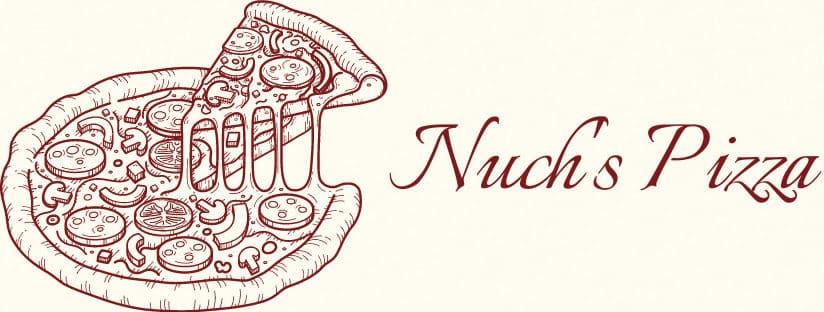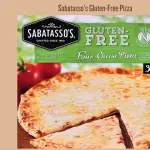Are you someone who loves pizza but is trying to adopt a gluten-free lifestyle? Are all your favorite recipes now off the menu because of this dietary restriction? If so, we have good news for you — it might be possible to enjoy some types of pizza while still adhering to your new diet!
In this blog post, we’ll explain the question is pizza gluten-free and discuss the various options available. Read on to learn more about integrating delicious and satisfying pizza into your gluten-free lifestyle.
You Also Like: Differences Between Ooni Koda 12 Vs 16
What Is Pizza Gluten-Free?

Gluten-free pizza is made using alternative flour and ingredients that don’t contain any wheat or other gluten-containing grains. This means that the dough, sauces, and toppings used to make the pizza are all free of this complex protein. Common alternatives include rice flour, cornmeal, almond meal, and cassava flour.
The taste and texture of gluten-free pizza can vary depending on the ingredients used, but if you buy a quality product from an experienced maker, it should still be quite delicious. However, there is always a risk of cross-contamination if gluten is present in other areas of the kitchen or preparation process.
Post You Might Be Interested In: Does Pizza Dough Have Eggs? | A Curious Look
What Are The Differences Between Gluten-Free Pizza And Normal Pizza?
The main difference between regular and gluten-free pizza is the dough. While traditional pizzas are made with wheat flour, gluten-free versions require alternative flours such as those mentioned above. The other ingredients — cheese, sauce, and toppings — should be the same regardless of whether you’re making a standard or gluten-free version.
At first glance, it may be difficult to tell the difference between a gluten-free pizza and one that wasn’t made that way. However, the texture of gluten-free pizzas may be different because wheat provides structure to dough that other flours cannot match. Additionally, some gluten-free options can be more expensive due to the alternative ingredients they contain.
What Are The Benefits Of Pizza Gluten-Free?
One of the main advantages of eating gluten-free pizza is that it’s a great way for those with celiac disease or other forms of gluten sensitivity to consume their favorite food without risking an adverse reaction. In addition, there are some potential health benefits to eating gluten-free pizza. For example, many alternative flours used in making these pizzas contain more fiber and nutrients than wheat flour.
Gluten-free pizzas can also be quite delicious and make a great meal for entertaining guests with dietary restrictions. They provide a unique flavor profile that everyone at the table can enjoy.
What Types of Crust Are Gluten-Free?
When it comes to crust, many options are available for those looking for a gluten-free pizza. Packaged mixes can be bought at most grocery stores, or you can make your own from scratch with alternative flour and baking ingredients.
Some popular gluten-free crust recipes include cauliflower crusts, almond flour crusts, coconut flour crusts, and chickpea flour crusts. If you’re in the mood for something simpler (and faster!), you can also purchase ready-made frozen gluten-free pizza crusts from several health food stores and online retailers.
What Are Gluten-Free Pizza Toppings?
When it comes to toppings, you’re in luck: most of your favorite pizza fixings are naturally gluten-free. This includes canned tomatoes (used for the sauce), cheeses, meats, vegetables, herbs, and spices. You can also get creative with alternative proteins, such as tofu and tempeh.
Just be sure to check the labels on any premade sauces or condiments that you plan to use — some may contain wheat or other gluten-containing ingredients. As long as everything is certified gluten-free and there’s no risk of cross-contamination during preparation, you should be good to go!
What Are Pizza Sauces Gluten-Free?
Most pizza sauces are naturally gluten-free as long as they don’t contain any added wheat flour or other grains. However, some premade and canned sauces may contain gluten, so be sure to read the labels carefully if you’re buying one for your pizza.
Homemade sauces are always a great option — blend some canned tomatoes with garlic, herbs, spices, and olive oil for a delicious, gluten-free sauce!
How Many Calories Of Gluten-Free Pizza?

The calorie count of a gluten-free pizza will depend on the type of crust, toppings, and sauce that you use. Generally speaking, it may be slightly lower, at around 350 calories per slice for a thin-crust pizza. By comparison, a regular wheat crust pizza can have up to 500 calories per slice.
If you’re watching caloric intake, try opting for cheeses, lean proteins, and plenty of veggies as toppings. This way, you can enjoy a delicious gluten-free slice without overdoing it on the calories!
How To Make A Gluten-Free Pizza?
Making gluten-free pizza is the same as making any other type of pizza — the only differences are that you’ll be using a gluten-free crust, topping, and sauce. You must ensure all the ingredients you use are certified gluten-free to avoid any potential cross-contamination.
Start by prepping the crust with a store-bought mix or by making one from scratch. Next, spread the sauce over the dough and add your desired toppings. Bake until the crust is golden and bubbling, then enjoy! You’ll need to rest the pizza for a few minutes before cutting it into slices.
By these steps and selecting gluten-free ingredients, you can enjoy delicious, homemade pizza without worrying about an adverse reaction. Plus, with all the alternative flours used in making these pizzas, you’ll get more fiber and nutrients than you would with a wheat flour crust! So enjoy your next gluten-free pizza night guilt-free!
FAQs
Does Pizza Dough Have Gluten?
Yes, traditional pizza dough is made with wheat flour and other gluten-containing grains. However, you can make gluten-free pizza dough using alternative flour such as almond flour, coconut flour, chickpea flour, or cauliflower.
Is Marinara Sauce Gluten-Free?
Most marinara sauces are naturally gluten-free. However, it’s still important to read the labels carefully to make sure that no added ingredients contain gluten.
Are Pepperoni Slices Gluten-Free?
Yes, most brands of pepperoni slices are naturally gluten-free. As always, check the labels for any added fillers or preservatives containing wheat or other grains.
How Much Is Gluten In A Normal Pizza?
Traditional wheat-crust pizzas can contain up to 20 ppm (parts per million) of gluten, which is enough to trigger an adverse reaction in people with celiac disease. However, make your own pizza using gluten-free ingredients and take the necessary precautions to avoid cross-contamination. You should be able to enjoy it without any adverse effects.
Does Pizza Restaurant Have a Gluten-Free Option?
Yes, many pizza restaurants now offer gluten-free options. Just make sure to double-check with the staff that everything is prepared according to safety protocols, and ask for a separate pan to avoid any potential cross-contamination. That way, you can enjoy all your favorite slices without worrying about adverse reactions!
Is Cheese For Pizza Gluten-Free?
Yes, most cheeses used for pizza are naturally gluten-free. However, it’s always good to read the labels carefully to make sure that no added preservatives or fillers contain gluten.
Can You Make Gluten-Free Deep Dish Pizza?
Yes, you can make a delicious gluten-free deep-dish pizza using alternative flour and other gluten-free ingredients. Remember to take the necessary precautions to avoid cross-contamination, such as using a separate pan or baking sheet. With this approach, everyone can enjoy a classic deep dish slice without worrying about any adverse reactions!
Conclusion
When it comes to the question of whether is pizza gluten-free? Food allergy sufferers must pay attention. Those who suffer from specific allergies need to remain particularly vigilant when trying something new; a proper understanding of the ingredients can ensure that an unexpected reaction doesn’t occur. Fortunately, many major pizza retailers are beginning to recognize this and are creating more options for those with dietary restrictions. Ultimately, the good news is that pizza lovers have more choices than ever before – whether it be traditional or gluten-free. It’s time to grab a slice and enjoy!

Iris Harper is a professional writer and restaurant set up consultant. She has over 10 years of experience in the food industry, and loves providing her clients with top-quality service. Her food reviews are highly sought after, as she has a knack for discovering new and delicious pizza creations.







